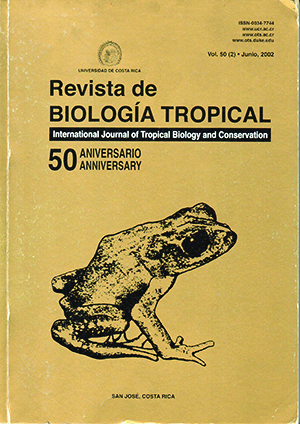Abstract
Cecropia latiloba can be considered to be one of the most efficient colonizers of open areas in the nutrient-rich whitewater floodplains of the Amazon river. Its main strategy to be successful is the high tolerance towards waterlogging and submergence, and the fast vertical growth and reiteration capacity. This, and the tolerance of high irradiation and sediment deposition allow C. latiloba to form large monospecific stands on open sites, and thus the first closed canopy which represents the initial phase of a successional sequence which leads to highly diverse forests. This tree is extremely well adapted to the adverse growth conditions in Amazonian floodplains with prolongued periods of flooding and seedling submergence. The species occurs on the lowest levels in the flooding gradient. Although it belongs to the most often cited species under aspects of taxonomy, species distribution and general descriptions of the ecosystem, little has been published about its ecology. In the present paper the ecological, physiological and phenological characteristics of C. latiloba are described. It is an evergreen species which constantly produces new leaves. With flooding, leaf production is reduced but new leaves are flushed also with prolongued flooding. The peak of flowering and fruiting are in the flooded period. When mature, the fruits are dispersed mainly by water and fish. Seed germination occurs, without dormancy, within 5-13 days after water retreat. In the 7 months before the first flooded period seedlings reach 1 m of height, and height growth increases until a height of 15-20 m is achieved. Photosynthetic assimilation is high, with values of up to 21 mmol CO2 m-2s-1. C. latiloba is a very flood tolerant species, and waterlogged seedlings continuously produce new leaves and adventitiuos roots.Comments

This work is licensed under a Creative Commons Attribution 4.0 International License.
Copyright (c) 2002 Revista de Biología Tropical
Downloads
Download data is not yet available.


